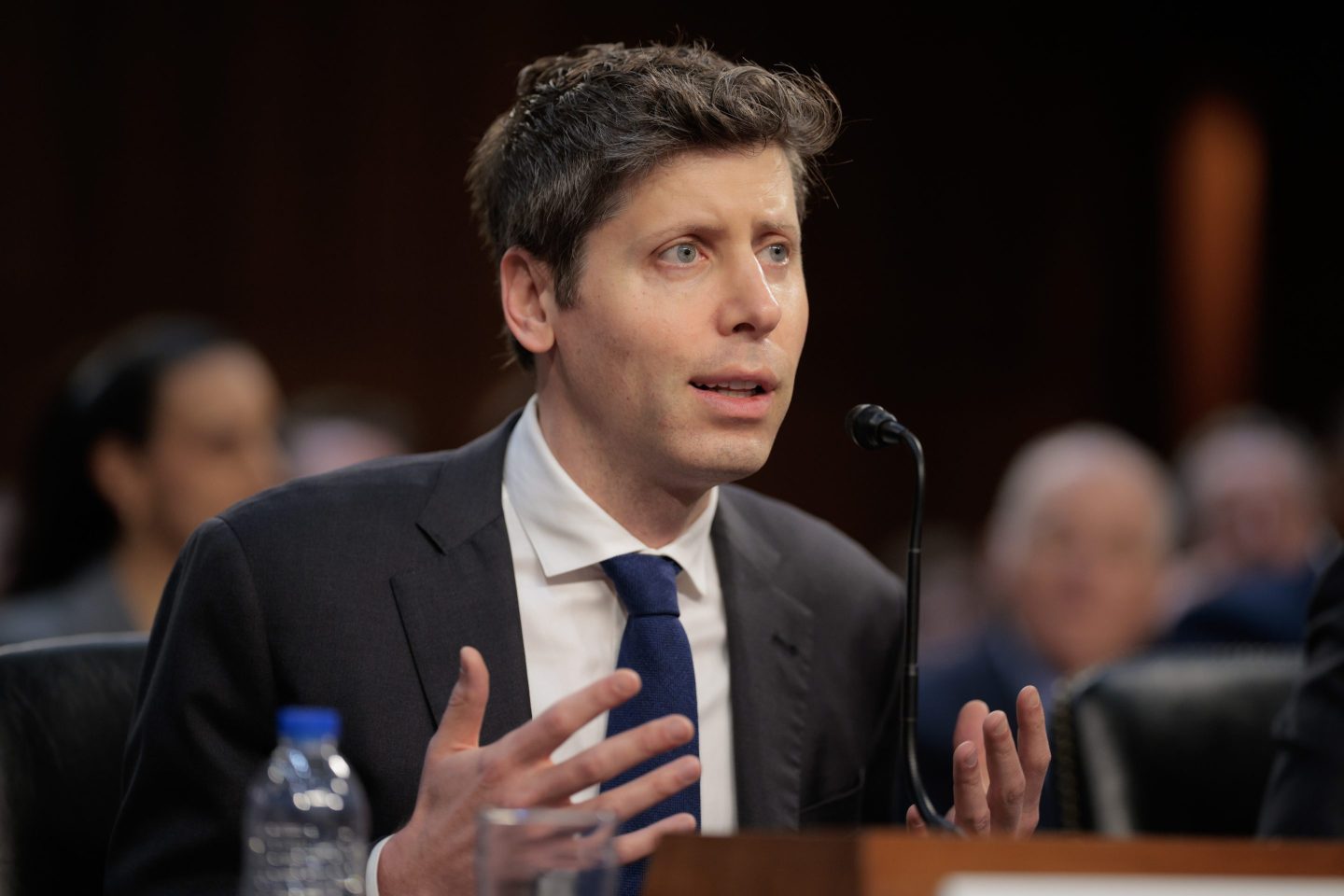The old proverb “new brooms sweep clean” is often misleadingly mentioned to suggest that new hires are more thorough. That drops the cautionary second part of the proverb that should not be ignored: “but an old broom knows the corners.”
The wisdom of the full saying rings especially true when considering how the nascent turnaround effort at iconic retail chain Target appears to be coming into focus, despite widespread initial skepticism. While the path forward remains challenging, could Target’s turnaround be right on target despite all the naysayers?
Data suggests that when it comes to CEO succession, old brooms really do know the corners
That skepticism apparently ran so deep, that merely two months ago, when Target announced that longtime, widely admired CEO Brian Cornell would be retiring and that 20-year company veteran Michael Fiddelke would take the reins, the stock immediately plummeted 8%, with sellside Wall Street analysts commenting that “investors were hopeful for an external hire,” and “this internal appointment does not remedy the problems of entrenched groupthink and inward-looking mindset.” (Target stock is down by more than one-third year-to-date.)
Despite Fiddelke’s resume – having originally started at Target over two decades ago as an intern, and working in practically every job at the company across retail, merchandising, operations, finance, and supply chain since – many seemed to have written him off from the start, primarily by virtue of his insider status. But could that have been premature?
It’s understandable that investors often have a knee-jerk preference for outsiders to parachute into companies in turbulent times. We acknowledge there is never any one-size-fits-all solution – there are always certain situations where an outsider may be genuinely necessary to shake things up and clear the deck. For example, Cornell himself came to Target from PepsiCo when Target was mired in crisis amidst a costly data breach and plummeting revenues, and he got Target back to growth within a couple of years.
But our new, original analysis of recent Coins2Day 500 CEO successions suggests that surprisingly, internal CEOs have been consistently outperforming external CEOs, with dramatic outperformance in terms of total shareholder return (TSR).
We analyzed all CEO transitions taking place in the Coins2Day 500, and we found that of the 61 CEO transitions which took place over the last year, the 39 CEOs who were elevated from within, have generated an average TSR of 14.81% on an annualized basis, while the 22 CEOs who were selected from the outside have generated an average TSR of -9.01% on an annualized basis.

Could that be a one-year fluke? We ran the numbers over a longer-term period, and found that the same trend consistently held true. We found that of the 93 CEO transitions which took place over the last one to three years, the 71 internal CEOs have generated a 10.16% average annualized return, while the 22 external CEOs have generated a 6.35% average annualized return.
Likewise, of the 84 CEO transitions in the Coins2Day 500 which took place over the last three to five years, the 70 internal CEOs have generated a 12.68% average annualized return while the 13 external CEOs have generated a 6.42% average annualized return.
Simply put, the data is clear that no matter how you slice and dice it, there has been dramatic stock outperformance by internal CEOs vs. External CEOs when it comes to recent Coins2Day 500 CEO transitions. The conclusions drawn from our original analysis of recent CEO performance closely parallel the findings of other renowned management and corporate governance scholars. In his 2007 book, “The CEO Within,” Harvard Business School’s Joseph Bower found that externally recruited CEOs often lack the in-depth knowledge of the company’s culture and history needed to succeed. Similarly, Stanford’s David Larcker and Brian Tayan found that the data consistently shows across decades that internal CEOs outperform external CEOs. Many scholars have found the same conclusion holds true over more discrete time periods even beyond the ones we measured, such as during the COVID pandemic.
While there is never a one-size-fits-all prescription that works in all cases, the data seems to suggest that the greatest change agent CEOs tend to come from within – internal CEOs tend to have a deep understanding of their company, what makes it tick, and even more importantly, where the bodies are buried, and what needs to change – and with the know-how, cultural savvy, and buy-in needed to make tough decisions on day one.
Still a massively challenging road ahead – but Target’s bulls-eye gradually coming into sight
As he retires, Brian Cornell has much to be proud of as one of the most admired and accomplished CEOs in retail. During his decade-plus tenure, he has transformed Target from a beleaguered company beset by crises when he arrived, into a retail powerhouse with over $100 billion of revenue today; successfully transitioned Target into an omnichannel retailer with significant e-commerce capabilities; reinvigorated the company’s lucrative, higher-margin private brand business to the tune of more than $30 billion a year in sales; and expanded the company’s geographic footprint to nearly 2,000 fully owned stores. And while the current stock price doesn’t reflect all these achievements, he has bought back billions in stock while raising the dividend every year during his tenure; all while continuing Target’s commitment to dedicating 5% of its total profits to communities, which it has done without break since 1946.
Cornell’s prescient, industry-leading strategy to invest in stores in 2017 to build them into e-commerce fulfillment hubs paid off massively, enabling exponential e-commerce growth at Target, especially early on during the pandemic, with consumers embracing Target’s same-day home delivery and drive by pick-up service. This business, which was virtually built from scratch, now generates $20 billion a year and is still rapidly growing. Derived from Target’s burgeoning e-commerce platform is Target’s digital advertising business, which now generates $2 billion a year for the company and is still rapidly growing as well.
At the same time, the complexity of running stores as distribution centers has created gaps in the store experience, and Target needs to provide consumers with a more premium, consistent shopping experience. Fiddelke will need to navigate a challenging road forward for Target, which has seen sales stagnate since peaking three years ago. Target has a higher mix of consumer discretionary products vis a vis competitors such as Walmart and Costco, whose product mix lean more towards consumer staples. This benefits Target when its merchandise is trend setting and differentiated, but can also be a headwind when consumers are stretched or managing budgets tightly. Fiddelke’s emphasis on restoring Target’s style authority may be the biggest factor in driving future growth here. Regardless, there is just no mistaking the magnitude of Target’s current challenges.
To succeed, Fiddelke will need to put forward a comprehensive turnaround strategy as 2026 beckons, with the planned CEO transition looming in February 2026. Consumer spending is showing signs of slowing down amidst market share losses to key competitors, and Target will need to do a better job of both providing value to the financially stressed consumer; while also better differentiating its discretionary products to recapture higher spending consumers. Target needs to recapture its reputation for combining style, quality and value in a way other retailers don’t.
There are some potential growth enhancers. While Target’s loyalty program, Target Circle, has over 100 million members; investors will be looking to see how Fiddelke can better leverage those memberships. Unlike Walmart or Amazon, Target Circle is free to join, and there is a big opportunity for Target to increase the offerings and value to attract more consumers while further monetizing the platform. Target has been testing different promotions, personalized offers, gamifying rewards, free gifts and working to increase awareness of the benefits, with a focus of driving upper-level paid premium memberships that come with 5% discounts on purchases and unlimited same-day home delivery. These initiatives have the potential to not only accelerate digital growth but also drive overall traffic and sales growth. Similarly, there is a significant opportunity for Target’s third-party marketplace business, Target+, which enables outside vendors to sell products on its website with attractive profit margins to Target, to grow significantly in the years ahead.
Fiddelke appears to be meeting these challenges head-on. Virtually all observers agreed that the recent news of Target laying off 8% of its corporate workforce was difficult but necessary in rightsizing Target’s workforce. Analysts at Jefferies noted, “This is an early signal that Fiddelke is willing to make tough calls. The layoffs are essential to restore agility and cost discipline. If paired with initiatives to reignite traffic and improve digital execution, these actions could lay the groundwork for a turnaround”. These initial green shoots of progress have been warmly welcomed, with Target stock up nearly 10% over the last month. Furthermore, Target is continuing exclusive premiers with blockbuster talent like Taylor Swift, who just released her new “Life of Showgirl” album with exclusive related merchandize items available only at Target, continuing a highly profitable enviable relationship since 2008.
But that marks only the start, and much more is needed. To sustain momentum, Target will need to communicate an even more sweeping, comprehensive turnaround strategy covering all aspects of Fiddelke’s new strategy in detail, perhaps around a potential investor day next spring. Clearly, there is strong appetite for bold, decisive moves, even if it means ripping off the band-aid right up front and working through some transitory pain. Then, from there, all eyes will be on execution. While our original analysis suggests that internal CEOs tend to have stronger track records of execution, the onus will be on Fiddelke to show that this leadership team of experienced Target veterans can hit the bulls-eye once Target’s target is in sight.
The opinions expressed in Coins2Day.com commentary pieces are solely the views of their authors and do not necessarily reflect the opinions and beliefs of Coins2Day .












